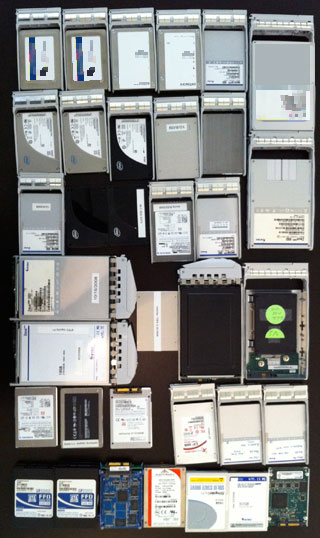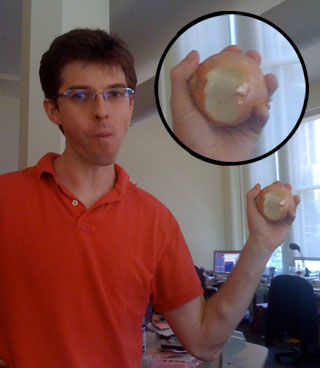In 2005, Sun released the source code to Solaris, described then as the company’s crown jewel. Why do this? The simplest answer is that Solaris had been losing ground to an open source competitor in Linux. Losing ground was a symptom of economics. Students who had once been raised on Solaris were being inculcated with Linux knowlege. The combination of Linux and x86 were good enough and significantly cheaper; new companies for whom the default had once been Sun/Solaris/SPARC were instead building on x86/Linux. OpenSolaris along with x86 support were specifically intended to address this trend. Indeed, the codename for OpenSolaris was “tonic” — the tonic for Solaris’ problems.
To that end, OpenSolaris was on reasonably stable footing: open source had become expected for an operating system, source code availability was a benefit to traditional enterprise users (especially with the advent of DTrace), and the community would attract new users. But then Solaris lost the plot. Users chose Solaris because it is a — or perhaps the — enterprise operating system. OpenSolaris was intended to broaden the appeal, but that notion was taken to such extremes as to lose sight of the traditional customers of Solaris, and, indeed, the focus that makes Solaris both unique and great.
OpenSolaris June 14, 2005 – August 13, 2010
We launched Solaris 10 in 2004 with an impressive list of features — ZFS, DTrace, Zones, SMF, FMA, Fire Engine — all highly relevant for enterprise users. You can find a company that has bet its business on the success of each of those features. In the wake of OpenSolaris, the decision was made (and here I can no longer use the active voice because by then I had left to start Fishworks elsewhere at Sun) to have an explicit focus on building an operating system for developers — which is to say, for their laptops. This was an error, but a predictable one. Once Solaris was free to download and use, revenue recognition for the Solaris organization which has always been difficult to measure became even more indirect. The metrics were changed: the targets for management bonuses became not revenue, or enterprise users, but downloads. Directly or indirectly much of the focus for the Solaris organization shifted to address that straightforward goal. The mistake was that OpenSolaris didn’t need to find users, they found Solaris. In trying to build a community, the new direction for OpenSolaris weakened the very principles upon which a thriving community would have been based.
The very name “OpenSolaris” got confused, diluted, and poluted. OpenSolaris was a source repository, a community, and a distro (although purists still insist that Indiana is the appropriate name for that part) intended to “close the familiarity gap” with Linux. Moreover, new projects that shifted efforts away from enterprise uses (read: paying customers) to focus on the laptop also rallied under the banner of “OpenSolaris”. In a way Oracle’s acquisition of Sun saved Solaris from itself; the marching orders became much clearer: address enterprise users, ship Solaris 11 (something that should not have taken 6 years). As for OpenSolaris, that decision too was likely simple for Oracle, never an overt fan of open source. Had “OpenSolaris” simply meant a code base and user community, I think there’s a good chance it would have been allowed to live. Burdened, however, with the baggage of the Indiana distro and sundry projects incomprehensible to Oracle management, OpenSolaris was in a politically untenable position. Mike‘s “Friday the 13th memo” merely made it official — Solaris was to be closed source once more.
Sun’s efforts with OpenSolaris were, at best, a mixed success. Quietly, however, an ecosystem of companies grew out of the technologies in OpenSolaris. Notably Joyent uses Zones and DTrace as significant differentiators; Nexenta builds very heavily on ZFS; as I’ve mentioned, Delphix, my new employer, builds on OpenSolaris as well. There are many more that I know about, and still more that I don’t. These companies chose OpenSolaris so they could use the innovative technologies that simply aren’t available anywhere else. And they did so in spite of a common trend towards Linux with its familiarity, and broad compatibility — the innovation in Solaris was more valuable and, in some cases, enabling for the company’s business.
illumos August 3, 2010 –
The danger for those companies has long been that Oracle would pull the rug out from under them; only the foolish had no contingency plan. The options were to give up on Solaris or maintain a fork. Happily illumos has stepped in to offer a third path. Garrett D’Amore and Nexenta graciously started the illumos project to carry the OpenSolaris torch. It is an ostensible fork of OpenSolaris (can you fork a dead project?), but more importantly a mechanism by which companies building on those component technologies can pool their resources, amortize their costs, and build a community by and for the downstream users who are investing in those same technologies. Rather than being operated by a single corporate interest, its steward will be a 501(c)(3) non-profit in the model of the Mozilla Foundation.
I was pleased to announce at tonight’s SVOSUG meeting that I’ll be joining the illumos developer council, I was delighted to accept when Garrett offered me the position. My bias for illumos is that the main repository will focus on reliability, performance, and compatibility while taking a conservative approach to new features and functionality. As much as possible, I’d like the downstream users — the distributions, appliances, and platforms — to make the decisions appropriate to their uses and only adopt large-scale changes into the trunk when there’s broad consensus among them. The goal must be to build a project that is readily useful to everyone and to allow our collective efforts to be shared as easily as possible.
What’s the future of Solaris? For many it will be Solaris 11 in late 2011. But for others, it will be illumos either as the firmware for an appliance (not unlike what we built at Fishworks in the 7000 series), the platform for your web applications, or as a general purpose operating system. The innovation in Solaris has always flowed from the creative individuals working on the project. Keep your eyes on illumos; Oracle ending OpenSolaris is no surprise, but in doing so they have broken their own monopoly on Solaris and Solaris talent.


